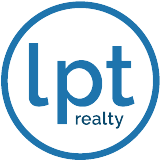How to Use Austin Sold Homes Data to Price Your Property

How to Use Austin Sold Homes Data to Price Your Property
Sellers in Austin, Cedar Park, Round Rock, Leander, and Pflugerville can set a winning listing price by studying recent sold homes and adjusting for condition, location, and timing.
Why Sold Data Beats Asking Prices
When preparing to sell, many homeowners look at active listings and assume their house should fetch a similar price. However, the only numbers that truly reflect what buyers will pay are closed sales. List prices are aspirations; sold prices are reality. By analyzing recent transactions in your neighborhood, you gain insight into buyers’ budgets, the features they value, and how much they’re willing to pay above or below asking. In a 2025 market with rising inventory, accurate pricing from sold data ensures your home doesn’t linger unsold or leave money on the table.

Real estate agent comparing sold data to price an Austin property
Gathering the Right Comparables
Start by identifying three to five homes sold in the past six months that are most similar to yours. Consider location (within a one-mile radius), square footage (within 10 percent), lot size, number of bedrooms and bathrooms, and style (single-story vs. multi-story, modern vs. traditional). Cedar Park’s brick ranches can’t be directly compared to downtown Austin lofts; Round Rock’s newer subdivisions differ from Leander’s acreage estates. Look at sold prices and note whether the homes were updated or in original condition. These comparables—often called “comps”—form the baseline for your pricing strategy.
Adjusting for Condition and Upgrades
Next, adjust the comparable prices to account for differences in condition and features. If your home has a new roof, energy-efficient windows, or a remodeled kitchen, you can justify a higher price than a similar home with dated finishes. Conversely, if a comparable property has a pool or a larger lot and yours doesn’t, reduce your price accordingly. In Pflugerville and Hutto, three-car garages and outdoor living spaces add value; in urban Austin, walkability to restaurants and parks commands a premium. A rule of thumb is to adjust 1–2 percent of value per significant feature, but a local Realtor can provide more precise numbers based on recent transactions.

Sellers painting and preparing their home before listing
Factoring in Market Momentum and Timing
Sold data also reveals how quickly homes are selling. If comparable properties in Cedar Park or Round Rock went under contract in a week and closed near asking, demand is strong, and you can price confidently at market value. If homes sat for 60+ days and sold below asking, pricing aggressively may be necessary. Seasonal timing matters, too: listings in March or April typically fetch higher prices as buyers aim to move before summer; homes listed in November may need to price more competitively to attract holiday-season buyers. Watch local absorption rates—if only half of listings are selling each month, buyers have the upper hand and may negotiate more steeply.

Aerial view of Austin suburbs
Setting a Smart Price Range
Rather than fixating on a single number, determine a realistic range based on your adjusted comps. For example, if comparables sold between $480,000 and $500,000 after adjustments, listing at $495,000 positions you competitively while leaving room for negotiation. Pricing just below round numbers (like $499,900 instead of $505,000) can attract buyers filtering searches under a certain threshold. In Leander and Liberty Hill, pricing under the next $25,000 increment often captures a wider audience. Remember: the goal is to generate strong interest early; a well-priced home will sell faster and closer to asking than one priced optimistically and reduced later.
Monitoring Feedback and Responding Quickly
Once your home hits the market, pay attention to showing feedback and online activity. If you receive multiple showings and an offer in the first week, your price is likely in line with buyer expectations. If showings are sporadic and there are no offers after two or three weeks, it may be time to adjust the price or enhance your home’s presentation. Data from sold listings shows that the longer a property sits, the larger the eventual price reduction. Making a single significant price cut (3–5 percent) sooner often reignites interest more effectively than several small reductions. Don’t take it personally—pricing is a strategy, not a reflection on your home.
Common Pricing Mistakes to Avoid
Sellers frequently overvalue personal upgrades or overlook neighborhood differences. Just because you spent $20,000 on a kitchen remodel doesn’t mean buyers will pay $20,000 more, especially if comparable homes have similar upgrades. Another mistake is pricing based on active listings rather than sold comps; those homes haven’t proven they can command that price. Finally, some sellers anchor to a past peak (for example, what a neighbor sold for in early 2022) without considering current market softening. Avoid these traps by anchoring your strategy in recent sold data and remaining flexible to market feedback.
Leveraging a Local Expert for Accurate Pricing
A Realtor experienced in Austin, Cedar Park, Round Rock, Leander, and Pflugerville markets can refine your pricing strategy. They have access to detailed MLS data on closed sales and can make nuanced adjustments for features you might overlook. An agent also understands how buyer preferences differ from neighborhood to neighborhood—why Pflugerville buyers value proximity to tech employers, why Liberty Hill buyers pay extra for acreage, or why Round Rock’s school zones influence pricing. Partnering with an expert ensures your listing price aligns with both sold data and current buyer demand.

Next Steps
Ready to set the right price? Begin by exploring recent closed sales on our See Recently Sold Nearby page; filter by neighborhood, size, and features to find relevant comps. Then, request a Free Home Valuation for a detailed analysis tailored to your address. Finally, compare your potential price with active listings via our Browse All Homes for Sale tool to understand your competition. With data-driven pricing, you’ll attract serious buyers and achieve the best outcome in today’s Austin market.
Categories
Recent Posts











